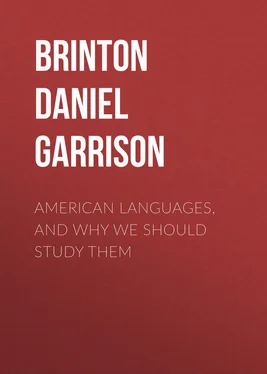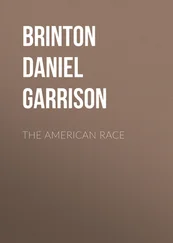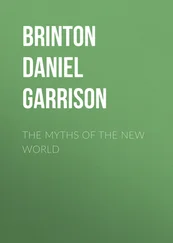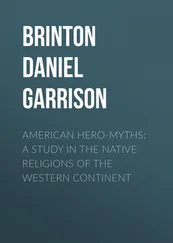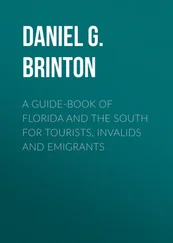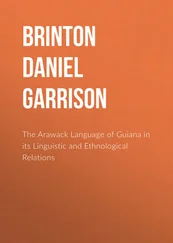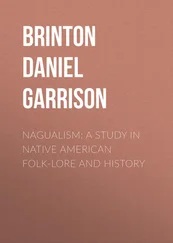The life-work of that eminent antiquary, the late Mr. Lewis H. Morgan, was based entirely on linguistics. He attempted, by an exhaustive analysis of the terms of relationship in American tribes, to reconstruct their primitive theory of the social compact, and to extend this to the framework of ancient society in general. If, like most students enamored of an idea, he carried its application too far, the many correct results he obtained will ever remain as prized possessions of American ethnology.
Personal names, family names, titles, forms of salutation, methods of address, terms of endearment, respect, and reproach, words expressing the emotions, these are what infallibly reveal the daily social family life of a community, and the way in which its members regard one another. They are precisely as correct when applied to the investigation of the American race as elsewhere, and they are the more valuable just there, because his deep-seated distrust of the white invaders – for which, let us acknowledge, he had abundant cause – led the Indian to practise concealment and equivocation on these personal topics.
In no other way can the history of the development of his arts be reached. You are doubtless aware that diligent students of the Aryan languages have succeeded in faithfully depicting the arts and habits of that ancient community in which the common ancestors of Greek and Roman, Persian and Dane, Brahmin and Irishman dwelt together as of one blood and one speech. This has been done by ascertaining what household words are common to all these tongues, and therefore must have been in use among the primeval horde from which they are all descended. The method is conclusive, and yields positive results. There is no reason why it should not be addressed to American languages, and we may be sure that it would be most fruitful. How valuable it would be to take even a few words, as maize, tobacco, pipe, bow, arrow, and the like, each representing a widespread art or custom, and trace their derivations and affinities through the languages of the whole continent! We may be sure that striking and unexpected results would be obtained.
Similar lines of research suggest themselves in other directions. You all know what a fuss has lately been made about the great Pyramid as designed to preserve the linear measure of the ancient Egyptians. The ascertaining of such measures is certainly a valuable historical point, as all artistic advance depends upon the use of instruments of precision. Mathematical methods have been applied to American architectural remains for the same purpose. But the study of words of measurement and their origin is an efficient auxiliary. By comparing such in the languages of three architectural people, the Aztecs of Mexico, the Mayas of Yucatan, and the Cakchiquel of Guatemala, I have found that the latter used the span and the two former the foot, and that this foot was just about one-fiftieth less than the ordinary foot of our standard. Certainly this is a useful result.
Конец ознакомительного фрагмента.
Текст предоставлен ООО «ЛитРес».
Прочитайте эту книгу целиком, купив полную легальную версию на ЛитРес.
Безопасно оплатить книгу можно банковской картой Visa, MasterCard, Maestro, со счета мобильного телефона, с платежного терминала, в салоне МТС или Связной, через PayPal, WebMoney, Яндекс.Деньги, QIWI Кошелек, бонусными картами или другим удобным Вам способом.
H. R. Schoolcraft.
